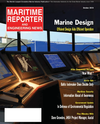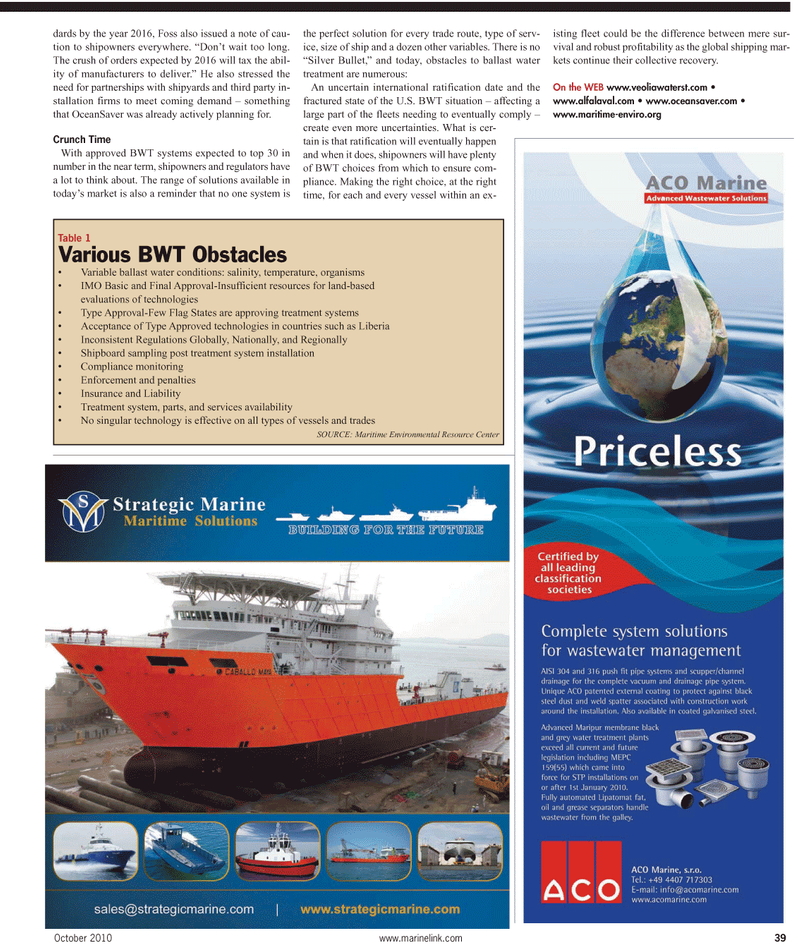
Page 39: of Maritime Reporter Magazine (October 2010)
Marine Design Annual
Read this page in Pdf, Flash or Html5 edition of October 2010 Maritime Reporter Magazine
dards by the year 2016, Foss also issued a note of cau- tion to shipowners everywhere. “Don’t wait too long.
The crush of orders expected by 2016 will tax the abil- ity of manufacturers to deliver.” He also stressed the need for partnerships with shipyards and third party in- stallation firms to meet coming demand – something that OceanSaver was already actively planning for.
Crunch Time
With approved BWT systems expected to top 30 in number in the near term, shipowners and regulators have a lot to think about. The range of solutions available in today’s market is also a reminder that no one system is the perfect solution for every trade route, type of serv- ice, size of ship and a dozen other variables. There is no “Silver Bullet,” and today, obstacles to ballast water treatment are numerous:
An uncertain international ratification date and the fractured state of the U.S. BWT situation – affecting a large part of the fleets needing to eventually comply – create even more uncertainties. What is cer- tain is that ratification will eventually happen and when it does, shipowners will have plenty of BWT choices from which to ensure com- pliance. Making the right choice, at the right time, for each and every vessel within an ex- isting fleet could be the difference between mere sur- vival and robust profitability as the global shipping mar- kets continue their collective recovery.
On the WEB www.veoliawaterst.com • www.alfalaval.com • www.oceansaver.com • www.maritime-enviro.org
Table 1
Various BWT Obstacles • Variable ballast water conditions: salinity, temperature, organisms • IMO Basic and Final Approval-Insufficient resources for land-based evaluations of technologies • Type Approval-Few Flag States are approving treatment systems • Acceptance of Type Approved technologies in countries such as Liberia • Inconsistent Regulations Globally, Nationally, and Regionally • Shipboard sampling post treatment system installation • Compliance monitoring • Enforcement and penalties • Insurance and Liability • Treatment system, parts, and services availability • No singular technology is effective on all types of vessels and trades
SOURCE: Maritime Environmental Resource Center
October 2010 www.marinelink.com 39

 38
38

 40
40
